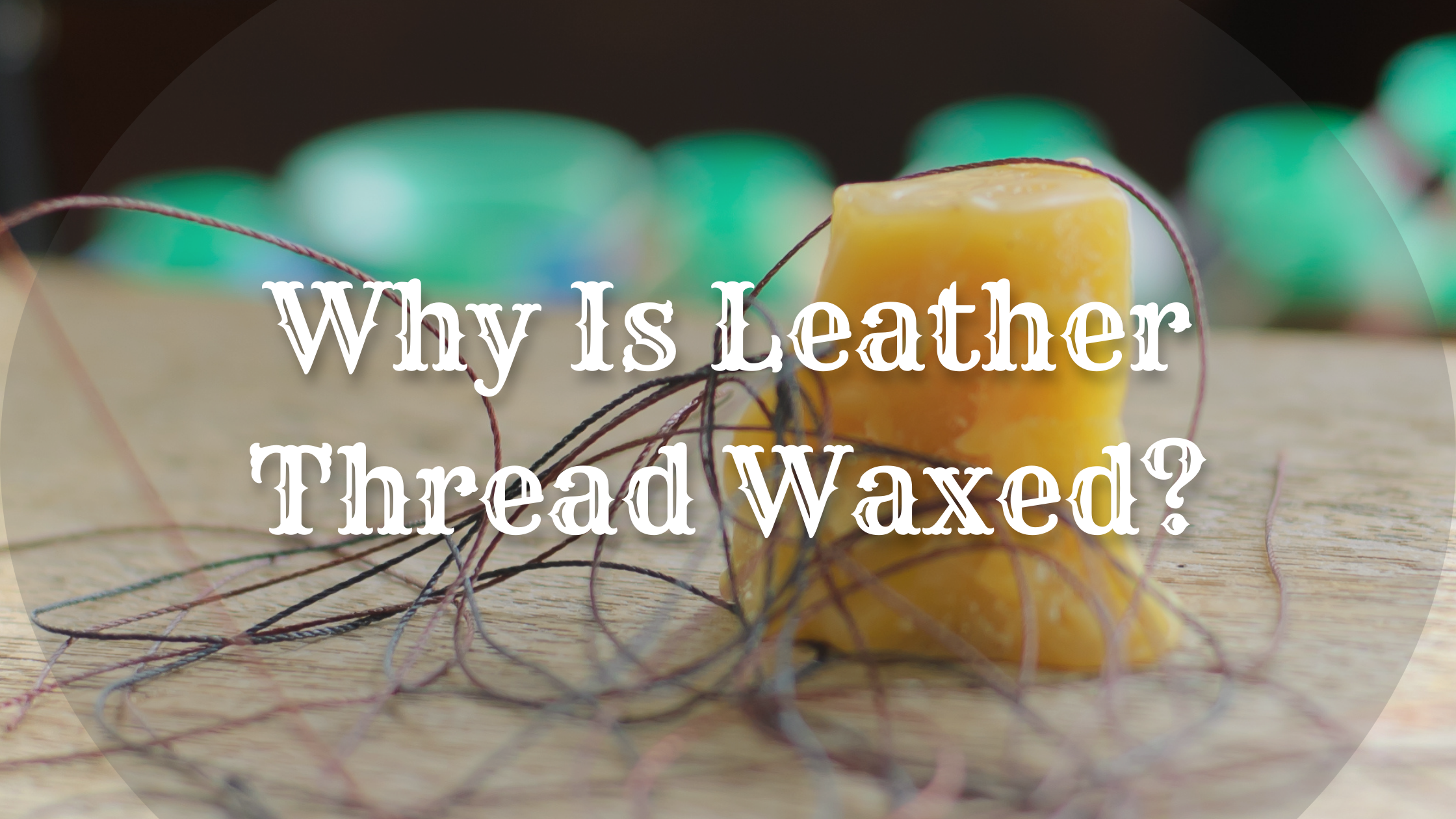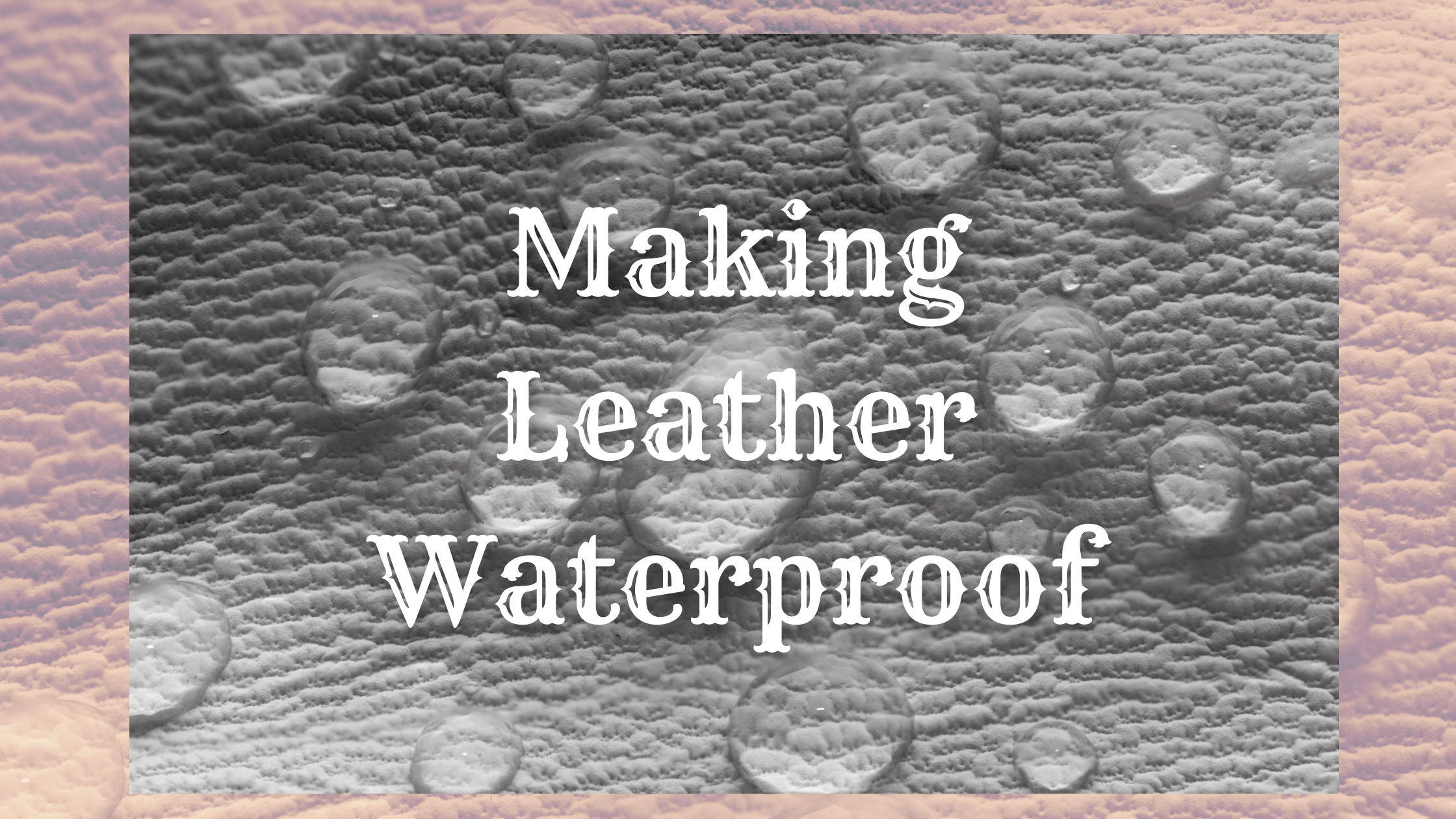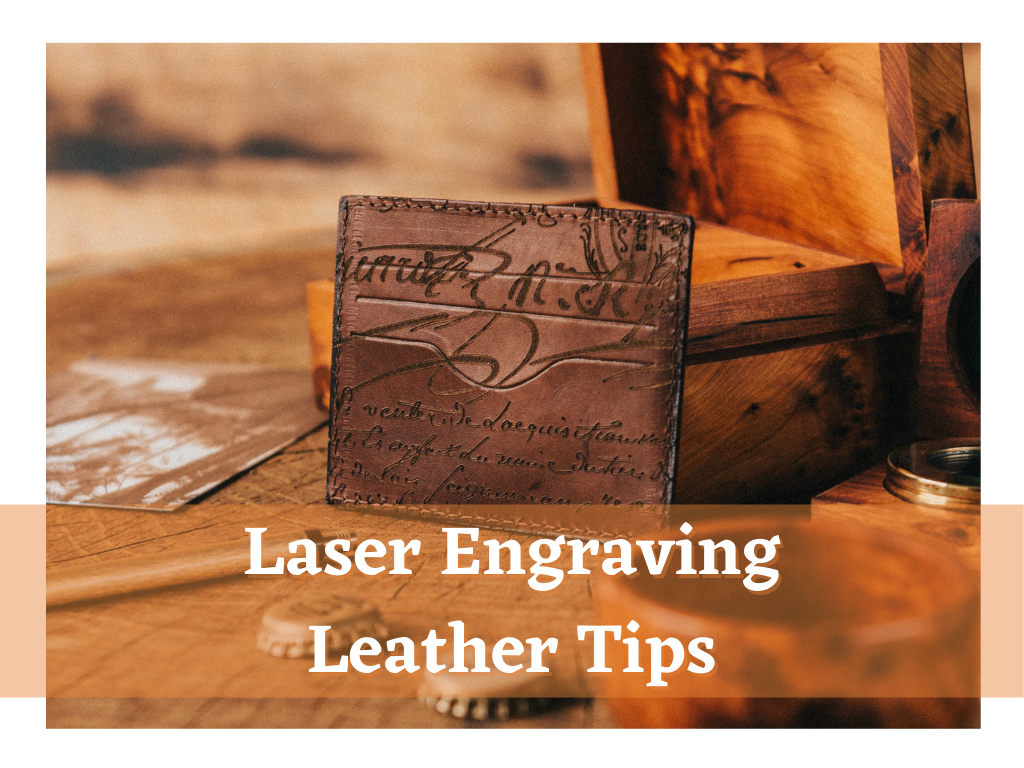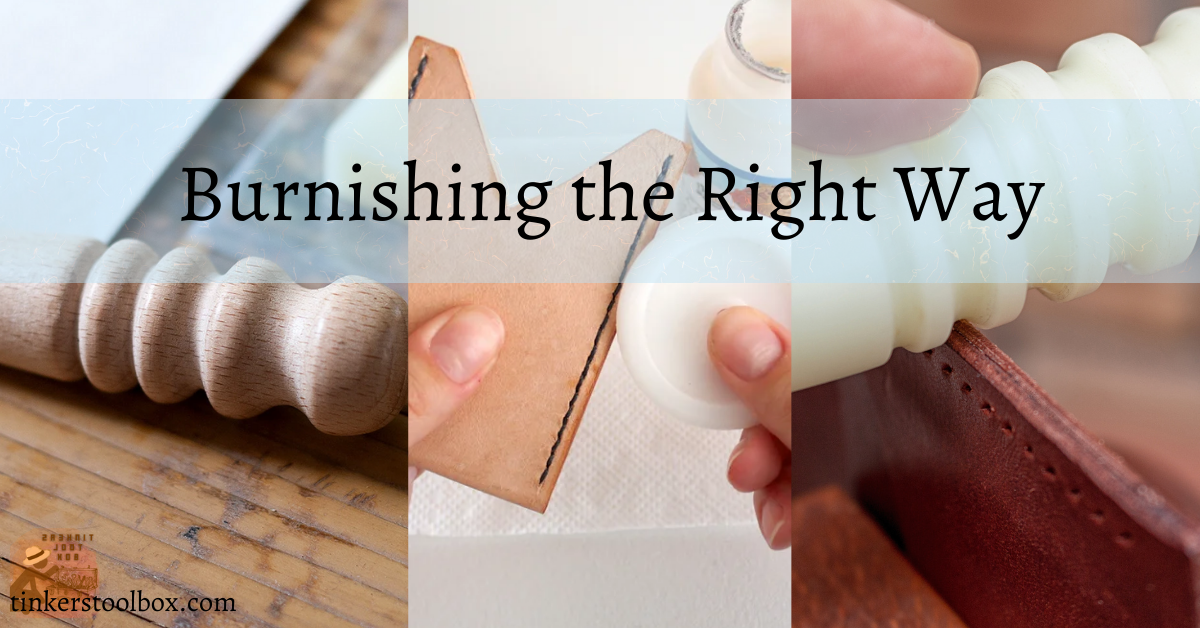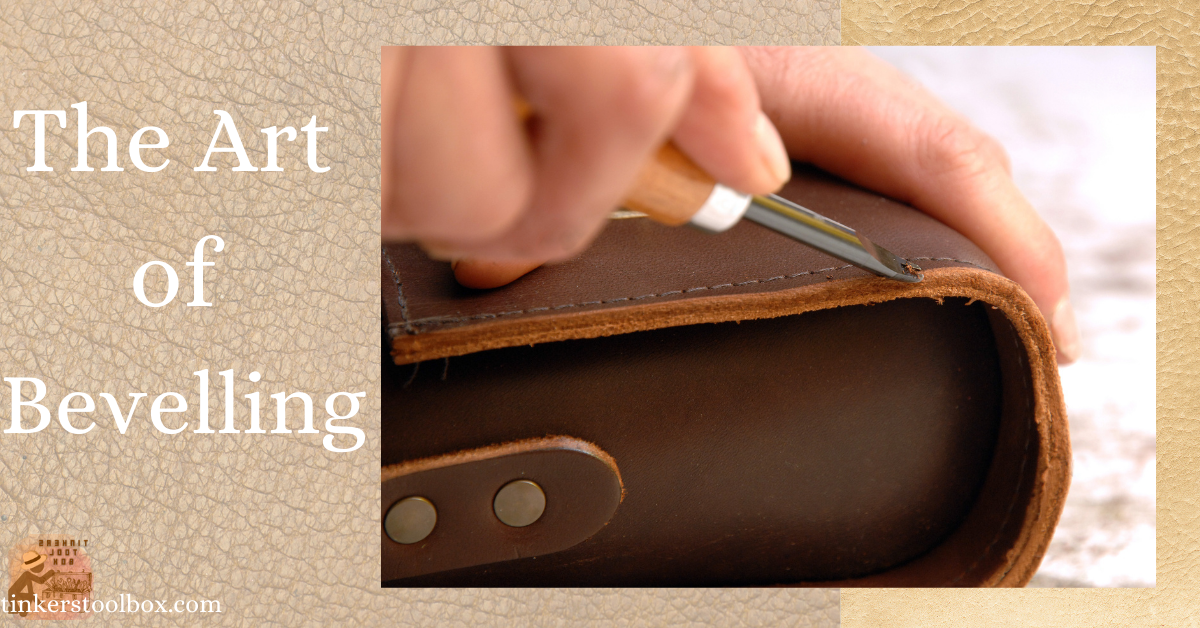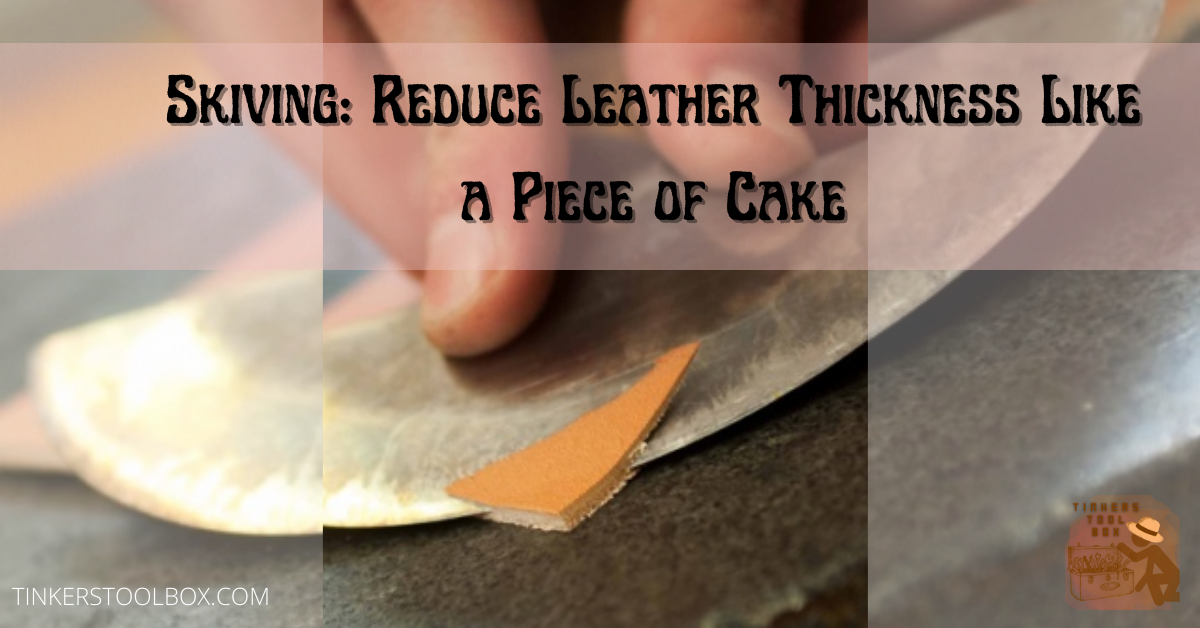Using the best thread for leather is very important because this is where the durability of your products depend. There are a lot of available thread types and brands on the market, all boasting various sizes, colors, qualities, and price tags perfect for every leather craftsman of varying expertise, but waxed threads are the best types recommended across all leatherworkers. Even though you can still use unwaxed thread on some of your leather projects, everyone is still recommending the use of waxed leather in most leatherworking projects in general.
Why is leather thread waxed? Leather thread is waxed for protection and durability purposes, as wax prevents the thread from fraying, decaying, and rotting due to its exposure to the natural elements and pests. It also boosts the aesthetic and quality of the products.
In this article, we will discuss the reasons why we use waxed thread in sewing leather. We will also discuss the different uses of waxed thread, both in leatherworking and other industries beyond. We will also talk about the perks of using waxed thread in your leather projects. Lastly, we will also talk about some brands recommended in waxed threads and also some tips in using waxed thread in your projects.
Reasons Why We Use Waxed Thread
Leather Cannot Handle Bare Threads
Leather is absolutely abrasive on fiber, so the wax helps keep your thread from fraying. The wax acts as a binding agent for the strands so that they won’t be unraveled while using it to sew through leather. Waxed threads usually handle the friction between the leather and thread once sewing begins. It is very important to note that leather is not the same as fabric or other kinds of material that can be sewn together.
In addition to that, since leather is sensitive, it will not be able to handle the friction the thread produces as it passes through it. Waxed thread can help ease the problem by acting as a lubricating agent to make the thread and the needle pass through it without any hassle on the leatherworker’s end.
Wax Also Protects The Thread Sewn
Since the thread is protected, it will not be easily decayed by the passing of time. Waxed thread is also used in bookbinding aside from sewing the leather jacket to the book, with this practice starting back in the Middle Ages. You can notice that old books published that the pages might be frayed but the waxed thread usually holds on for a long time. The wax protects the water from moisture, molds, and other natural agents responsible for decaying.
When the plant-based thread gets exposed to the elements, it leads to the eventual decay and inevitable destruction of the product. If you notice the old books in your school or public library, the ones that are sewn with waxed thread are still bound together, and the pages are still intact, unlike those who were bound using unwaxed thread, which were more prone to decay due to time and other elements present in the atmosphere.
Waxed Thread Lasts Even Longer
When the waxed thread is used, the stitches would last even longer. Longer lasting stitches is a sign of a leather product’s good quality and also craftsmanship of the craftsman. Waxed thread is also proven safe from the natural elements, thanks to the wax used in the thread. Though side effects may include thread discoloration and waxy residue on some parts, it can be forgivable compared to the strength it can give to the leather products.
A slight discoloration is much forgivable than the whole product falling apart because of its frayed threads. At least in slight discoloration, or waxy residue, those are very little inconsistencies compared to a product falling apart just because unwaxed thread is used in binding the pieces together. As for the waxy residue, you can just wipe it off using a soft cloth just to make it look much cleaner.
Different Uses of Waxed Thread
Top Choice To Use For Sewing Leather
A lot of leatherworking enthusiasts and expert leather craftsmen have vouched for the use of waxed leather in all leather sewing processes. Aside from the protection it offers, it also gives ease of sewing to the craftsmen since the thread goes through smoothly. The wax on the thread acts as a lubricating agent that makes sewing much easier because the thread is able to pass through dense objects like leather more easily.
Promises of long lasting thread and stitches are usually achieved when using waxed leather. Even newbies are advised to use waxed leather so that they will not find it hard to learn how to sew in the first place. It is perfectly safe and highly recommended to use waxed leather in learning how to sew, then once you are comfortable and confident enough with your skills, you can try using whatever thread you want to use for your projects, be it waxed or unwaxed.
The Best Choice in Shoemaking by The Experts
Another related skill, shoemaking has recommended the use of waxed thread in sewing shoes. Wax sort of melts into the thread during sewing, which helps to anchor it against other threads and holes. Not enough wax can lead to excessive looseness in shoes, so it is very important to use thread with binding agents for additional security and protection.
In addition to that, in hand stitching, the wax likely helps the thread grip onto itself, making it easier to sew. The only setback is that it rubs off on the exterior of the project, which can be taken cared of after sewing.
Other Uses of Waxed Thread in Crafts
A lot of other industries related to leatherworking and crafts use waxed thread in their projects. It is primarily used in sewing two pieces of material in, but also used in binding other materials in place. Some of its very obvious examples include leatherworking, shoemaking, bookbinding, and furniture repair.
There are also interesting examples as well. That includes fishing when used as lines for fishing lines, macrame when it is used to sew pieces together, basket weaving for sewing parts that needed sewing in to the baskets, jewelry making for the beads to pass through and it is also a stronger thread for binding trinkets and beads together, and even in measuring objects.
Particularly in jewelry making, using this is very helpful as the beads pass through easily without any efforts needed and it makes the overall jewelry making process much easier. Waxed thread is also used in making rosaries for the same reason. Back then, if they did not have the money to afford metal chains for their rosaries, the rosary makers would use waxed thread in making the rosaries. It also makes the rosaries cheaper but the quality is not and will never be compromised.
Perks Of Using Waxed Thread in Projects
Maximum Protection Against The Elements Guaranteed
There is a reason why craftsmen of the olden times have used waxed thread in binding objects together. Waxed thread does not stretch or give over time, and is known to be very strong and durable. It also knots very well, thanks to the way they are twisted together in the manufacturing process and its natural fibers. Even though synthetic fibers exist, plant-based threads are still much more durable and trustworthy.
Waxed linen thread is actually five percent stronger when wet, so it is perfectly okay to be used in products you have to use outside such as luggage, shoes, hats, and so on. Waxed thread is also not susceptible to moisture, molds, sudden temperature changes, and rotting even though it is made of plant fibers.
The wax in the thread also makes the thread stiffer and less stretchy. It makes the thread achieve its own form without losing it while being used in sewing the leather pieces together. Waxed thread is also water repellant and mice cannot gnaw on the thread because of the wax, giving it another advantage especially in leather projects meant to withstand the test of time, such as luggages. Lastly, waxed thread is the best choice if you want your crafts to last a longer time.
Also Helps in The Overall Quality of The Craft
When leather craftsmen use waxed thread, the stitches last longer. Its stiff characteristic makes it even more durable when used in leather crafts. Products with waxed thread used in stitching it together lasts even longer. Good stitching means high quality craftsmanship, which translates to higher sales and more clients trusting the craftsman in his products.
It is very important to establish a good clientele in leatherworking, especially if you are looking for another source of income. That can only be achieved if you have high quality products that can talk for you, and that will translate into more people buying your products and trusting you enough to refer you to their other friends and connections.
Waxed Thread Also Boosts The Aesthetics
Customers buy waxed thread because they want the stitches to stand out or to become a focal point. Its glossy finish adds another level of creativity, aesthetic, and sophistication to the product. They usually buy threads with heavier thread size because the stitch visibility increases with the thread size.
However, there are a few downsides in using waxed thread with heavier sizes. That includes the need for larger needles that make larger holes in leather, and pushing the needle through the material is proven to be harder in threads with heavier sizes. Nevertheless, the use of waxed leather enhances the overall look of the product and gives it a more professional and polished finish.
The colors in the waxed thread also give off a more creative twist to it. That is why several leather workers use colored waxed thread in some of their projects. Colored thread is already fun and creative to use as it is, but the colored waxed thread gives off a much glossier finish. Add to that the color that it already has and it is a perfect choice for much more creative projects in the future.
Waxed Thread Personal Recommendations And Tips
There are several brands known in the market nowadays, but here are some waxed thread brands to recommend, based on personal experience. Here are also some tips in using waxed thread for your projects.
Fil Au Chinois Lin Cable Thread
Image courtesy of Rocky Mountain Leather Supply
This is a French brand of linen thread that started in 1827 and became very popular in the 1850s. Its high quality in waxed linen thread is being sought after by boutiques, both high end and artisanal, and luxury brands through the years. As such, expect it to be pricier than other brands in the market, with a spool costing $22.99 each.
Even if it is much pricier than the others, it provides stellar quality in stitching and it lasts a long time. Its number of years in the industry also serve as a living testament that people have trusted in this brand for a long time, for generations of craftsmen, from Coco Chanel, Louis Vuitton, to newer craftsmen over the years. Ever since it got revived in 2007, a lot of fashion houses have been using their threads in their products.
Irish Barbour Thread by The Barbour Mill Company
Image courtesy of The Yarn Badger
This another famous waxed thread brand has humble beginnings. It started as a small business in County Down, Ireland in 1784. Then, as it expanded to the United States and Germany by the end of the 19th century and has merged with competitors, it is now estimated to be the largest of linen thread in the world.
It is much more affordable than Fil Au Chinois, with a spool costing $9.84 each but the quality is not and will never be compromised. This is the best thread recommended to starters because of its price and promised stability.
Its waxed threads are also of another level, with the wax used to be of high quality.
Tandy Leather Factory Waxed Thread
Image courtesy of Tandy Leather
This one is the most affordable yet highly durable one in the list, with each spool costing $7.63 for 25 yards. It is also well known to be very much heavy duty as a waxed linen thread. Tandy offers great sheen and low elongation, wear resistant and higher strengths compared to other waxed thread brands.
Users of Tandy Leather Factory waxed thread have left glowing reviews for the thread. Some are saying that it is well-waxed but not too much, therefore not giving the users any problems with the waxy residue it leaves on the needles, the leather, or anywhere. One user has claimed that it made his work with the Speedy Stitcher such a breeze, or on other sewing awls.Some have used it on leather, denim, waxed canvas and wool felt, as well as around the house for various ad hoc repairs and creations.
Other Helpful Tips in Using Waxed Thread
Even though waxed thread is the best choice for sewing thread, it is and should be only used for hand stitching. Never use it in your sewing machine because it might affect the performance of your sewing machine due to the wax buildup. The wax buildup can clog the needle holes and some parts of the sewing machine, which can cause damage to the sewing machine in itself.
Make sure to use a waxed thread that is a bit darker in color especially if you are working with darker hues of leather because the thread is the first one to fade. Do not worry much on wax buildup as it can be manageable. Remember to only use waxed thread in hand stitching for easier sewing and lesser stress.
You should also clean the holes of your stitching needles with the wax residue from using waxed thread after each project so that the residue would come off much easier. Remember that wax hardens when it gets cold so as soon as possible, get rid of the wax residue. Not only are you making your needles clean, you are also prolonging their life span since you can still use them for a long time.
Conclusion
Through the years, waxed thread is the best choice when we sew through leather. Sewing is very important in leatherworking as it is literally the binding agent to make leather products look more finished, polished, and functional. Waxed thread is not only used for aesthetic purposes. It is also used to make the stitches last longer, and the overall look of the product to be more durable. There are a lot of available waxed thread brands on the market, but you have to choose the one brand which you are comfortable using in your projects. Waxed thread makes your leather projects last longer, and if you are selling leather goods, makes the products look more professionally done than the others.
